
 |
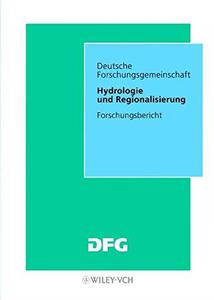 Hydrologie und Regionalisierung: Ergebnisse eines Schwerpunktprogramms (1992-1998) By 1999 | 488 Pages | ISBN: 3527271457 | PDF | 8 MB Content: Chapter 1 Zum Problem der Regionalisierung in der Hydrologie (pages 1-12): Professor Dr.?Ing. Hans?B. KleebergChapter 2 Skalenwechsel uber Modelle (pages 13-24): Professor Dr. Gerd PeschkeChapter 3 Skalenwechsel uber Parameter (pages 25-98): Professor Dr.?Ing. Hans?B. Kleeberg, Dr. Alfred Becker, Professor Dr. Wolfram Mauser, Professor Dr. Bernd Diekkruger, Dr. Andreas Schumann and Dr. Robert SchwarzeChapter 4 Daten und Werkzeuge (pages 99-112): Professor Dr. Ulrich StreitChapter 1 GIS?basierte gro?skalige hydrologische Modellierung (pages 113-129): Dr. Alfred Becker and Werner LahmerChapter 2 Regionalisierung der Verdunstung (pages 130-149): Dr. Harald Braden, Thomas Blanke and Susanne BottcherChapter 3 Heraufskalieren von landwirtschaftlich genutzten Okotopen (pages 150-174): Professor Dr. Bernd Diekkruger, Professor Dr. Otto Richter, Helge Bormann and Christian RenschlerChapter 4 Untersuchungen zur computergestutzten Regionalisierung von geomorphometrischen Reliefmerkmalen und ihre Parametrisierung in Niederschlag?Abflu??Modellen in Einzugsgebieten unterschiedlicher Gro?enordnung (pages 175-190): Professor Dr. Richard Dikau, Kirsten Hennrich and Jochen SchmidtChapter 5 Regionalisierung der Abflu?bildung uber die Aggregierung homogener Flachen unter Verwendung des Geographischen Informationssystems ARC/INFO und der Digitalen Reliefanalyse (Programm SARA) (pages 191-204): Professor Dr. Gerhard Gerold, Professor Dr. Bernd Cyffka, Johannes Sutmoller, Jens?Peter Kruger and Gerald BuschChapter 6 Regionalisierung von Abflu?komponenten, Verweilzeiten und Speichervolumen im Wesereinzugsgebiet (pages 205-217): Professor Dr. Andreas Herrmann, Matthias Schoniger and Martin SommerhauserChapter 7 Parametermodelle und effektive Parameter zur Simulation von Wasserflussen im Schwerpunktprogramm "Regionalisierung in der Hydrologie" (pages 218-234): Professor Dr.?Ing. Hans?B. Kleeberg, Tibor Molnar and Georg KasperChapter 8 Ableitung und Regionalisierung von Laufzeit und Speicherfunktion fur direkte Abflu?komponenten aus direkt beobachtbaren geographischen Informationen (pages 235-248): Gerhard Riedel and Professor Dr.?Ing. Ulrich ManiakChapter 9 Regionalisierung von aktueller Verdunstung und Bodenfeuchte mit Flachenparametern aus Fernerkundungsdaten (pages 249-266): Professor Dr. Wolfram Mauser, Stephan Schadlich, Ulrich Strasser, Stefan Taschner and Christoph WegeChapter 10 Die Abflu?bildung in ihrer Abhangigkeit von der wirksamen Kombination flachenvariabler Einflu?faktoren und vom Gebietszustand (pages 267-281): Professor Dr. Gerd Peschke, Christiane Etzenberg, Sven Zimmermann, Jorg Topfer and Gabriele MullerChapter 11 Berucksichtigung der stochastischen Unsicherheit bei der Aggregation von Niederschlag?Abflu??Modellen fur homogene Teilflachen in Einzugsgebietsmodelle (pages 282-303): Professor Dr.?Ing. E. h., em. Erich Plate, Professor Dr. Andras Bardossy, Bruno Merz and Jose ForlaniChapter 12 System? und Modellanalyse fur ein integriertes Konzept der regionalen Wasserhaushaltsmodellierung unter besonderer Berucksichtigung regionaler Ahnlichkeitsmerkmale (pages 304-318): Professor Dr.?Ing. Fritz Rohde, Christoph Gitschel and Oliver BuchholzChapter 13 Ein Verfahren zur Regionalisierung raumlich?zeitlicher Strukturen frontalen Niederschlags aus Klimamodellen (pages 319-323): Grietje Muller?Popkes and Professor Dr. Rainer RothChapter 14 Regionale Parametrisierung eines hydrologischen Niederschlag?Abflu??Modells fur Mittelgebirgsverhaltnisse (pages 324-344): Roland Funke, Dr. Andreas H. Schumann and Professor Dr.?Ing. Gert A. SchultzChapter 15 Regionalisierung von Abflu?komponenten, Umsatzraumen und Verweilzeiten fur kleine Mittelgebirgseinzugsgebiete (pages 345-370): Dr. Robert Schwarze, Werner Droge and Knut OpherdenChapter 16 Entwicklung von GIS?Werkzeugen fur die Regionalisierung (pages 371-389): Sven Fuhrmann, Karl?Heinz Kosubek, Peter Mittring and Professor Dr. Ulrich StreitChapter 17 Vergleichende Untersuchungen zur Regionalisierung des Bodenwasserhaushalts bei unterschiedlichen Nutzungen, Reliefbedingungen und Ma?staben (pages 390-404): Dr. Gerd Wessolek, Jochen Gross and Professor Dr. Manfred RengerChapter 18 Modellierung von Ruckgangslinien des Abflusses durch nichtlineare Speicher und Regionalanalyse der Parameter (pages 405-416): Professor Dr.?Ing. Hartmut WittenbergChapter 19 Datenverwaltung fur das Zielgebiet im Schwerpunktprogramm "Regionalisierung in der Hydrologie" (pages 417-429): Professor Dr.?Ing. Hans?B. Kleeberg and Winfried Willems  Hydrogen Bonding and Transfer in the Excited State, Volume I & II By 2010 | 948 Pages | ISBN: 0470666773 | PDF | 60 MB This book gives an extensive description of the state-of-the-art in research on excited-state hydrogen bonding and hydrogen transfer in recent years. Initial chapters present both the experimental and theoretical investigations on the excited-state hydrogen bonding structures and dynamics of many organic and biological chromophores. Following this, several chapters describe the influences of the excited-state hydrogen bonding on various photophysical processes and photochemical reactions, for example: hydrogen bonding effects on fluorescence emission behaviors and photoisomerization; the role of hydrogen bonding in photosynthetic water splitting; photoinduced electron transfer and solvation dynamics in room temperature ionic liquids; and hydrogen bonding barrier crossing dynamics at bio-mimicking surfaces. Finally, the book examines experimental and theoretical studies on the nature and control of excited-state hydrogen transfer in various systems. Hydrogen Bonding and Transfer in the Excited State is an essential overview of this increasingly important field of study, surveying the entire field over 2 volumes, 40 chapters and 1200 pages. It will find a place on the bookshelves of researchers in photochemistry, photobiology, photophysics, physical chemistry and chemical physics.Content: Chapter 1 Vibrational Dynamics of the Double Hydrogen Bonds in Nucleic Acid Base Pairs (pages 1-27): Yun?an Yan and Oliver KuhnChapter 2 Vibrational Energy Relaxation Dynamics of XH Stretching Vibrations of Aromatic Molecules in the Electronic Excited State (pages 29-38): Takayuki EbataChapter 3 Hydrogen Bond Basicity in the Excited State: Concept and Applications (pages 39-78): Attila DemeterChapter 4 Solute-Solvent Hydrogen Bond Formation in the Excited State. Experimental and Theoretical Evidence (pages 79-123): Iulia Matei, Sorana Ionescu and Mihaela HillebrandChapter 5 Electronic?Excited?State Structures and Properties of Hydrated DNA Bases and Base Pairs (pages 125-147): Manoj K. Shukla and Jerzy LeszczynskiChapter 6 Insight from Singlet into Triplet Excited?State Hydrogen Bonding Dynamics in Solution (pages 149-158): Guang?Jiu Zhao and Ke?Li HanChapter 7 Probing Dynamic Heterogeneity in Nanoconfined Systems: The Femtosecond Excitation Wavelength Dependence and Fluorescence Correlation Spectroscopy (pages 159-174): Shantanu Dey, Ujjwal Mandal, Aniruddha Adhikari, Subhadip Ghosh and Kankan BhattacharyyaChapter 8 Fluorescence Studies of the Hydrogen Bonding of Excited?State Molecules within Supramolecular Host-Guest Inclusion Complexes (pages 175-191): Brian D. WagnerChapter 9 Hydrogen Bonding on Photoexcitation (pages 193-204): Debarati Dey, Manas Kumar Sarangi and Samita BasuChapter 10 Effect of Intramolecular H?Bond?Type Interactions on the Photochemistry of Aza?Stilbene?Like Molecules (pages 205-215): Giampiero Bartocci, Ugo Mazzucato and Anna SpallettiChapter 11 Hydrogen Bonding Barrier?Crossing Dynamics at Biomimicking Surfaces (pages 217-267): Rajib Kumar Mitra, Pramod Kumar Verma, Debapriya Banerjee and Samir Kumar PalChapter 12 Intermolecular Hydrogen Bonding in the Fluorescence Excited State of Organic Luminophores Containing Both Carbonyl and Amino Groups (pages 269-285): Ilijana Timcheva and Peter NikolovChapter 13 Hydrogen?Bonding Effects on Excited States of Para?Hydroxyphenacyl Compounds (pages 287-311): David Lee PhillipsChapter 14 Hydrogen?Bonding Effects on Intramolecular Charge Transfer (pages 313-329): Govindarajan KrishnamoorthyChapter 15 Chemical Dynamics in Room?Temperature Ionic Liquids: The Role of Hydrogen Bonding (pages 331-340): Souravi Sarkar, Rajib Pramanik and Nilmoni SarkarChapter 16 Vibrational Spectroscopy for Studying Hydrogen Bonding in Imidazolium Ionic Liquids and their Mixtures with Cosolvents (pages 341-352): Johannes KieferChapter 17 Intramolecular H?Bond Formation Mediated De?Excitation of Curcuminoids: A Time?Resolved Fluorescence Study (pages 353-375): Luca Nardo, Alessandra Andreoni and Hanne Hjorth TonnesenChapter 18 Hydrogen Bonds of Protein?Bound Water Molecules in Rhodopsins (pages 377-391): Hideki KandoriChapter 19 Ground? and Excited?State Hydrogen Bonding in the Diazaromatic Betacarboline Derivatives (pages 393-417): Carmen Carmona, Manuel Balon, Maria Asuncion Munoz, Antonio Sanchez?Coronilla, Jose Hidalgo and Emilio Garcia?FernandezChapter 20 Effect of H?Bonding on the Photophysical Behaviour of Coumarin Dyes (pages 419-431): Sukhendu Nath, Manoj Kumbhakar and Haridas PalChapter 21 Role of Hydrogen Bonds in Photosynthetic Water Splitting (pages 433-461): Gernot RengerChapter 22 Proton Transfer Reactions in the Excited Electronic State (pages 463-523): Vladimir I. TominChapter 23 Controlling Excited?State H?Atom Transfer along Hydrogen?Bonded Wires (pages 525-554): Carine Tanner Manca, Christian Tanner and Samuel LeutwylerChapter 24 Excited?State Proton Transfer via Hydrogen?Bonded Dimers and Complexes in Condensed Phase (pages 555-578): Cheng?Chih Hsieh, Chang?Ming Jiang and Pi?Tai ChouChapter 25 QM/MM Study of Excited?State Solvation Dynamics of Biomolecules (pages 579-588): Tetsuya Taketsugu, Daisuke Kina, Akira Nakayama, Takeshi Noro and Mark S. GordonChapter 26 Excited?State Intramolecular Proton Transfer Processes on Some Isomeric Naphthalene Derivatives: A Density Functional Theory Based Computational Study (pages 589-608): Sankar Prasad De and Ajay MisraChapter 27 Conformational Switching Between Acids and their Anions by Hydrogen Bonding (pages 609-626): Taka?Aki Okamura, Hitoshi Yamamoto and Norikazu UeyamaChapter 28 Charge Transfer in Excited States: ab initio Molecular Dynamics Simulations (pages 627-639): Maciej Kolaski, Anupriya Kumar, Han Myoung Lee and Kwang S. KimChapter 29 Competitive ESIPT in o?Hydroxy Carbonyl Compounds: Perturbation through Solvent Modulation and Internal Torsion (pages 641-660): Sivaprasad MitraChapter 30 Excited?State Double Hydrogen Bonding Induced by Charge Transfer in Isomeric Bifunctional Azaaromatic Compounds (pages 661-709): Dolores Reyman and Cristina Diaz?OlivaChapter 31 Hydrogen?Bonded Large Molecular Aggregates of Charged Amphiphiles and Unusual Rheology: Photochemistry and Photophysics of Hydroxyaromatic Dopants (pages 711-745): Moazzam Ali and Swapan K. SahaChapter 32 Excited?State Intramolecular Proton Transfer in 2?(2??Hydroxyphenyl)benzoxazole Derivatives (pages 747-760): Yi Pang and Weihua ChenChapter 33 Ultrafast Dynamics of the Excited States of Hydrogen?Bonded Complexes and Solvation (pages 761-795): Dipak K. PalitChapter 34 Volume Changes Associated with Solute-Solvent Reorganization Following Photoinduced Proton Transfer in Aqueous Solutions of 6?Methoxyquinoline (pages 797-803): Stefania Abbruzzetti and Cristiano ViappianiChapter 35 Molecular Recognition and Chemical Sensing of Anions Utilizing Excited?State Hydrogen?Bonding Interaction (pages 805-814): Ashutosh S. Singh and Shih?Sheng SunChapter 36 Theoretical Studies of Green and Red Fluorescent Proteins (pages 815-837): Hong Zhang, Qiao Sun, Sufan Wang, Seth Olsen and Sean C. SmithChapter 37 Changes in Active Site Hydrogen Bonding upon Formation of the Electronically Excited State of Photoactive Yellow Protein (pages 839-855): Wouter D. Hoff, Zhouyang Kang, Masato Kumauchi and Aihua XieChapter 38 Excited State Dynamics in the Light?Driven Enzyme Protochlorophyllide Oxidoreductase (POR) (pages 857-864): Marie Louise Groot and Derren James HeyesChapter 39 Photodissociation of Molecules in Pure and Doped Water and in Nitrogen Heterocyclic Clusters in the Excited State (pages 865-891): Michal Farnik, Petr Slavicek and Udo Buck 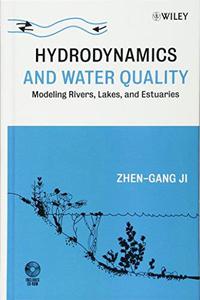 Hydrodynamics and Water Quality: Modeling Rivers, Lakes, and Estuaries By Zhen?Gang Ji(auth.) 2008 | 692 Pages | ISBN: 0470135433 | PDF | 21 MB Mathematical modeling for environmental and water resources management This hands-on reference illustrates the principles, basic processes, mathematical descriptions, and practical applications of modeling surface waters. It discusses hydrodynamics, sediment processes, toxic fate and transport, and water quality and eutrophication in rivers, lakes, estuaries, and coastal waters. There has been great progress in mathematical modeling that simulates surface waters numerically. Modeling is becoming a powerful tool, and this reference gets readers up to speed quickly. Practically organized to facilitate quick reference, Hydrodynamics and Water Quality: Modeling Rivers, Lakes, and Estuaries: Focuses on how to solve environmental problems in surface waters Uses a practical, application-oriented approach: chapters begin with an introduction of basic concepts, proceed to discussions of physical, chemical, and/or biological processes and their mathematical representations, and conclude with real-life case studies Has a companion CD that includes a modeling package and electronic files of numerical models, case studies, and model results, plus other materials to help readers use the models and tools Features case studies that show how to use models appropriate to environmental and water resources management Provides detailed information on how to use the three-dimensional Environmental Fluid Dynamics Code (EFDC) model supported by the EPA This is a must-have reference for environmental scientists, engineers, geologists, chemists, and government regulators, as well as other water quality professionals. It is also an excellent text for graduate students in fields that encompass hydrodynamics and water quality.Content: Chapter 1 Introduction (pages 1-12): Chapter 2 Hydrodynamics (pages 13-112): Chapter 3 Sediment Transport (pages 113-200): Chapter 4 Pathogens and Toxics (pages 201-245): Chapter 5 Water Quality and Eutrophication (pages 247-416): Chapter 6 External Sources and TMDL (pages 417-436): Chapter 7 Mathematical Modeling and Statistical Analyses (pages 437-472): Chapter 8 Rivers (pages 473-508): Chapter 9 Lakes and Reservoirs (pages 509-565): Chapter 10 Estuaries and Coastal Waters (pages 567-634): 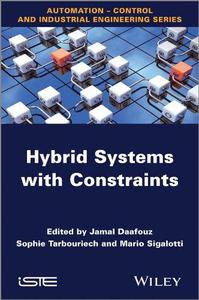 Hybrid Systems with Constraints By 2013 | 269 Pages | ISBN: 1848215274 | PDF | 4 MB Control theory is the main subject of this title, in particular analysis and control design for hybrid dynamic systems.The notion of hybrid systems offers a strong theoretical and unified framework to cope with the modeling, analysis and control design of systems where both continuous and discrete dynamics interact. The theory of hybrid systems has been the subject of intensive research over the last decade and a large number of diverse and challenging problems have been investigated. Nevertheless, many important mathematical problems remain open.This book is dedicated mainly to hybrid systems with constraints; taking constraints into account in a dynamic system description has always been a critical issue in control. New tools are provided here for stability analysis and control design for hybrid systems with operating constraints and performance specifications.Contents:1. Positive Systems: Discretization with Positivity and Constraints, Patrizio Colaneri, Marcello Farina, Stephen Kirkland, Riccardo Scattolini and Robert Shorten.2. Advanced Lyapunov Functions for Lur'e Systems, Carlos A. Gonzaga, Marc Jungers and Jamal Daafouz.3. Stability of Switched DAEs, Stephan Trenn.4. Stabilization of Persistently Excited Linear Systems, Yacine Chitour, Guilherme Mazanti and Mario Sigalotti.5. Hybrid Coordination of Flow Networks, Claudio De Persis, Paolo Frasca.6. Control of Hybrid Systems: An Overview of Recent Advances, Ricardo G. Sanfelice.7. Exponential Stability for Hybrid Systems with Saturations, Mirko Fiacchini, Sophie Tarbouriech, Christophe Prieur.8. Reference Mirroring for Control with Impacts, Fulvio Forni, Andrew R. Teel, Luca Zaccarian.Content: Chapter 1 Positive Systems: Discretization with Positivity and Constraints (pages 1-20): Patrizio Colaneri, Marcello Farina, Stephen Kirkland, Riccardo Scattolini and Robert ShortenChapter 2 Advanced Lyapunov Functions for Lur'e Systems (pages 21-55): Carlos A. Gonzaga, Marc Jungers and Jamal DaafouzChapter 3 Stability of Switched DAEs (pages 57-83): Stephan TrennChapter 4 Stabilization of Persistently Excited Linear Systems (pages 85-120): Yacine Chitour, Guilherme Mazanti and Mario SigalottiChapter 5 Hybrid Coordination of Flow Networks (pages 121-143): Claudio De Persis and Paolo FrascaChapter 6 Control of Hybrid Systems: An Overview of Recent Advances (pages 145-178): Ricardo G. SanfeliceChapter 7 Exponential Stability for Hybrid Systems with Saturations (pages 179-212): Mirko Fiacchini, Sophie Tarbouriech and Christophe PrieurChapter 8 Reference Mirroring for Control with Impacts (pages 213-255): Fulvio Forni, Andrew R. Teel and Luca Zaccarian  Yvonne Spielmann, Anja Welle, Stan Jones, "Hybrid Culture: Japanese Media Arts in Dialogue with the West" English | 2012 | pages: 277 | ISBN: 0262018373 | PDF | 43,0 mb An exploration of the tensions between East and West and digital and analog in Japanese new-media art.
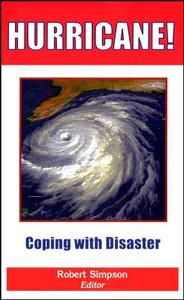 Hurricane! Coping with Disaster: Progress and Challenges Since Galveston, 1900 By 2003 | 360 Pages | ISBN: 0875902979 | PDF | 9 MB Published by the American Geophysical Union as part of the Special Publications Series.Hurricane research implicates something more than science. It is the key to saving lives and mitigating economic damage. From the Galveston catastrophe of 1900, where more than 8,000 people died, to the economic devastation wrought by Hurricane Andrew in 1992 in the United States, scientists have striven to understand and track hurricanes while charting their societal effects. Hurricane! Coping with Disaster tells the dramatic history of that effort by leading meteorologists?the men and women who brought hurricane science into the 21st century, and those who sustain it today. for readers everywhere interested in climatology, hurricane research, the historical background, and more.Content: Chapter 1 Twentieth Century Challenges and Milestones (pages 3-37): William M. GrayChapter 2 Impact of Technologies from Two World Wars (pages 39-61): Edward N. Rappaport and Robert H. SimpsonChapter 3 Hurricane Surveillance by Specially Instrumented Aircraft (pages 63-101): Robert C. SheetsChapter 4 Evolution of Prediction Models (pages 103-126): Mark DeMaria and James M. GrossChapter 5 The Great Galveston Hurricane of 1900 (pages 128-140): Neil L. FrankChapter 6 Social Choice in Dealing with Hurricanes (pages 141-153): Mary Frances Myers and Gilbert F. WhiteChapter 7 Communicating Damage Potentials and Minimizing Hurricane Damage (pages 155-164): Herbert S. SaffirChapter 8 Reducing Vulnerability (pages 165-173): Roger A. PielkeChapter 9 A Century of Scientific Progress: An Evaluation (pages 177-204): Kerry EmanuelChapter 10 A Century of Progress in Tracking and Warning: Improvements in Observations, Models, and Forecasts (pages 205-216): H.E. WilloughbyChapter 11 The Burgeoning Role of Weather Satellites (pages 217-247): C. Velden, J. Simpson, W. Timothy Liu, J. Hawkins, K. Brueske and R. AthensChapter 12 Present Day Satellite Technology for Hurricane Research: A Closer Look at Formation and Intensification (pages 249-289): E.A. Ritchie, J. Simpson, W.T. Liu, J. Halverson, C.S. Velden, K.F. Brueske and H. PierceChapter 13 Continuous Monitoring of the Hurricane Core: Availability of New Long?Endurance Small Drone Aircraft (pages 291-304): Greg Tyrrell and Greg HollandChapter 14 Hurricane Upper Level Wind Measurements: Applications of Doppler Lidar (pages 305-315): G. David EmmittChapter 15 A Century After Galveston, 1900: A Personal Perspective and Outlook (pages 317-334): Greg Holland 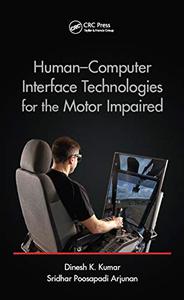 Dinesh K. Kumar, Sridhar Poosapadi Arjunan, "Human-Computer Interface Technologies for the Motor Impaired" English | 2015 | pages: 212 | ISBN: 1482262665 | PDF | 13,1 mb Human Computer Interface Technologies for the Motor Impaired examines both the technical and social aspects of human computer interface (HCI). Written by world-class academic experts committed to improving HCI technologies for people with disabilities, this all-inclusive book explores the latest research, and offers insight into the current limitations of this field. It introduces the concept of HCI, identifies and describes the fundamentals associated with a specific technology of HCI, and provides examples for each. It also lists and highlights the different modalities (video, speech, mechanical, myoelectric, electro-oculogram, and brain-waves) that are available, and discusses their relevant applications. 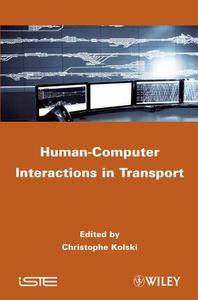 Human-Computer Interactions in Transport By 2011 | 386 Pages | ISBN: 1848212798 | PDF | 20 MB The human-computer interactions are more and more present in our everyday life, and lead to many conceptual and methodological problems for the designers and evaluators of interactive systems. This book is about Human-Computer Interaction in Transport domain, in which the traveler becomes a user of information systems, particularly before and during the travel(s). This book will focus on traveler information and personalized systems, using a human-centered design approach.Content: Chapter 1 Principles, Issues and Viewpoints of Traveler Information in a Multimodal Context (pages 1-20): Chapter 2 User Needs Analysis Methodology for the Design of Traveler Information Systems (pages 21-49): Chapter 3 A Generic Method for Personalizing Interactive Systems (pages 51-91): Chapter 4 A Formal Framework for Design and Validation of Multimodal Interactive Systems in Transport Domain (pages 93-128): Chapter 5 From Human?Machine Interaction to Cooperation (pages 129-155): Chapter 6 ICT and New Human?machine Interactions for Trucks and Buses of the Future (pages 157-201): Chapter 7 User?centered Approach to Design an Adaptive Truck Driving Assistance (pages 203-231): Chapter 8 Menu Sonification in an Automotive Media Center (pages 233-281): Chapter 9 Consideration of the Travel Time Experience in The Conceptual Models Of Personalized Interactive Applications (pages 283-310): Chapter 10 Towards New Interactive Displays in Stations and Airports (pages 311-342): Chapter 11 Transport (pages 343-368):  Human Drug Metabolism: An Introduction, Second Edition By Michael D. Coleman(auth.) 2010 | 350 Pages | ISBN: 0470742178 | PDF | 4 MB Human Drug Metabolism, An Introduction, Second Edition provides an accessible introduction to the subject and will be particularly invaluable to those who already have some understanding of the life sciences. Completely revised and updated throughout, the new edition focuses only on essential chemical detail and includes patient case histories to illustrate the clinical consequences of changes in drug metabolism and its impact on patient welfare. After underlining the relationship between efficacy, toxicity and drug concentration, the book then considers how metabolizing systems operate and how they impact upon drug concentration, both under drug pressure and during inhibition. Factors affecting drug metabolism, such as genetic polymorphisms, age and diet are discussed and how metabolism can lead to toxicity is explained. The book concludes with the role of drug metabolism in the commercial development of therapeutic agents as well as the pharmacology of some illicit drugs.Content: Chapter 1 Introduction (pages 1-11): Chapter 2 Drug Biotransformational Systems - Origins and Aims (pages 13-22): Chapter 3 How Oxidative Systems Metabolize Substrates (pages 23-64): Chapter 4 Induction of Cytochrome P450 Systems (pages 65-92): Chapter 5 Cytochrome P450 Inhibition (pages 93-123): Chapter 6 Conjugation and Transport Processes (pages 125-157): Chapter 7 Factors Affecting Drug Metabolism (pages 159-212): Chapter 8 Role of Metabolism in Drug Toxicity (pages 213-267):  John Updike, "Hugging the Shore: Essays and Criticism" English | 2013 | pages: 896 | ISBN: 0812983785 | EPUB | 2,6 mb "Writing criticism is to writing fiction and poetry as hugging the shore is to sailing in the open sea," writes John Updike in his Foreword to this collection of literary considerations. But the sailor doth protest too much: This collection begins somewhere near deep water, with a flotilla of short fiction, humor pieces, and personal essays, and even the least of the reviews here-those that "come about and draw even closer to the land with another nine-point quotation"-are distinguished by a novelist's style, insight, and accuracy, not just surface sparkle. Indeed, as James Atlas commented, the most substantial critical articles, on Melville, Hawthorne, and Whitman, go out as far as Updike's fiction: They are "the sort of ambitious scholarly reappraisal not seen in this country since the death of Edmund Wilson." With Hugging the Shore, Michiko Kakutani wrote, Updike established himself "as a major and enduring critical voice; indeed, as the pre-eminent critic of his generation." |